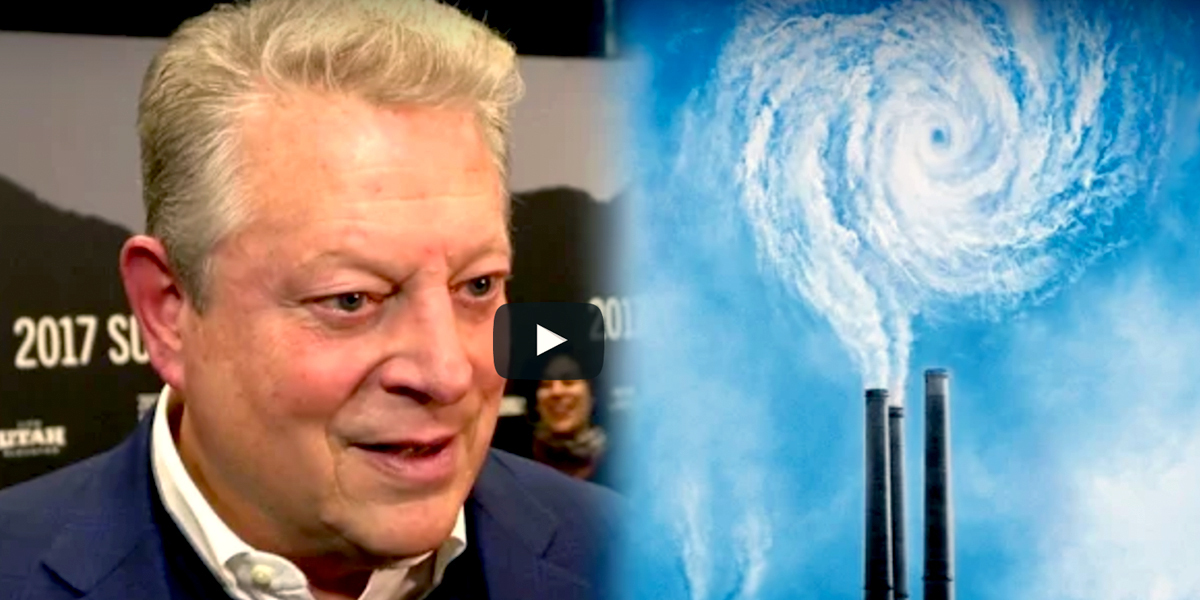

When
An Inconvenient Truth was released more than 10 years ago, the most criticized scene of Al Gore‘s climate change documentary was the flooding of downtown New York City from sea level rise and storm surge.
Well, as the former vice president explains in the first official clip of An Inconvenient Sequel: Truth to Power, that prediction came true.
[facebook https://www.facebook.com/AnInconvenientTruth/videos/343294439146892/ expand=1]
The new film, which premiered last week at the Sundance Film Festival in Park City, Utah, is a follow-up to the groundbreaking 2006 documentary. It follows Gore’s efforts around the world to influence international climate policy and galvanize support for the climate change movement.
The overall message is more hopeful compared to its predecessor, emphasizing how solutions for climate change are already at hand.
“It has much more emphasis on the solutions,” as Gore explains in the clip below. “Compared to 10 years ago, the solutions are widely available now and are in many cases cheaper than continuing to burn dirty fuel that causes the problem in the first place.”
[facebook https://facebook.com/EcoWatch/videos/1504142262932039/ expand=1]
The response to the new film has been positive so far. According to The Hollywood Reporter, the screening was met by two standing ovations.
“Now we are undergoing a time of challenge, but we are going to prevail,” Gore told the crowd during a Q&A after the screening. “I’m not going to give all the evidence of why I’m so confident. Always remember that the will to act is a renewable resource.”
“We will win,” Gore added. “No one person can stop this movement. We want this movie to recruit others.”
The original Oscar-winning film sparked a major environmental movement, prompting millions around the world to start asking questions about our warming planet. While a lot of progress has been made, from advances in climate science to the renewable energy boom, there’s still a lot of work to be done—especially since Donald Trump, a notorious climate denier, is now the most powerful person in the world. Incidentally, Gore unveiled the clip on the same day of the presidential inauguration.
Gore made headlines last month when he met with Trump and his daughter Ivanka to discuss climate change. When asked by an audience member what he got from the Trump talks, Gore responded, “We will know soon enough. It’s not the last conversation. A lot of people started out as climate-change denialists. Whether he will change remains to be seen.”
“He was receptive to some of what I had to say, and I appreciated that,” Gore also told The Hollywood Reporter in a later interview. “Candidate Trump made a number of statements and wrote a bunch of tweets that caused concern, but he also has other statements that at least give rise to the possibility that he and his team will take a fresh look at the reality of what we’re facing here.”
An Inconvenient Sequel: Truth to Power, directed by Bonni Cohen and Jon Shenk, comes to theaters July 28. To coincide with the film’s release, publishing company Rodale Books will also release a companion book of the same name.
Watch Gore’s Q&A here:
[facebook https://www.facebook.com/AnInconvenientTruth/videos/847378348738496/ expand=1]

 233k
233k  41k
41k  Subscribe
Subscribe 